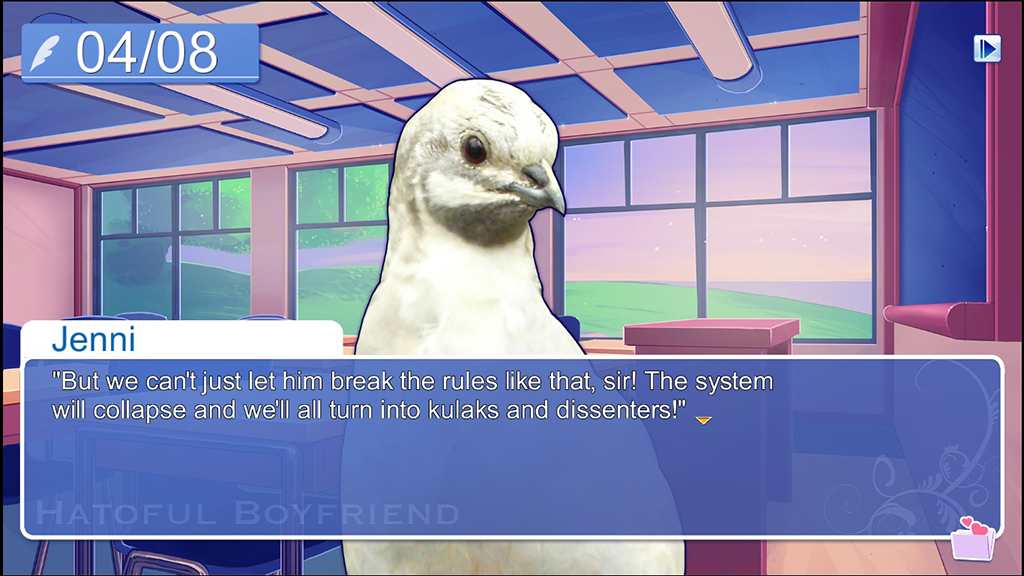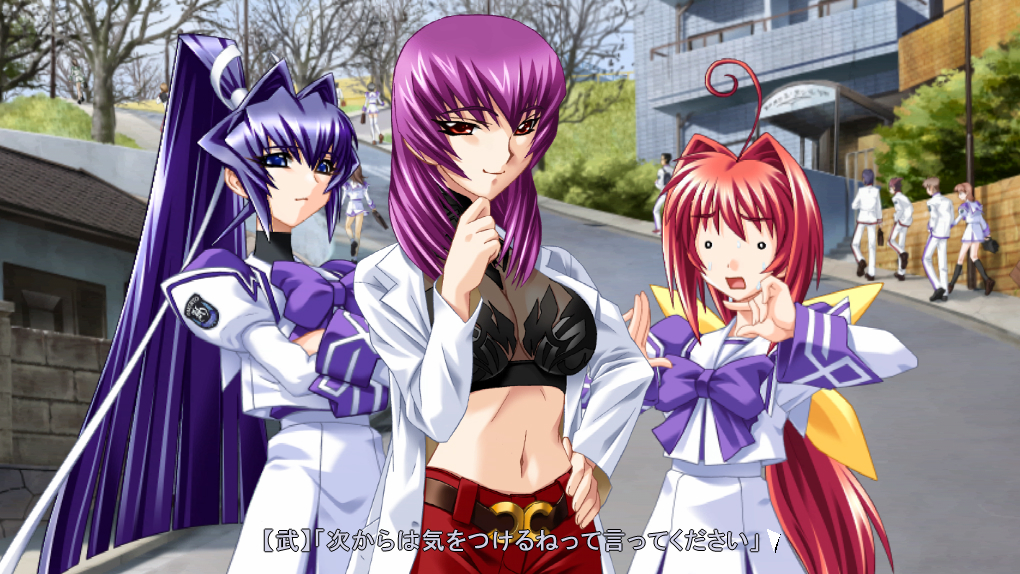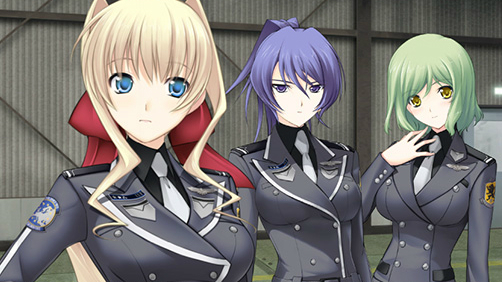Why a visual novel raised $1.2 million on Kickstarter

In late September, a Kickstarter campaign asking for $250,000 launched with the promise of something a small group of fans have been eagerly waiting for: an English translation of visual novel Muv-Luv. Eight hours later, the campaign hit that goal. A little over a month later, Muv-Luv's campaign closed at $1,255,444—more money than the popular Kickstarters for Divinity: Original Sin, Underworld Ascendant, The Banner Saga and Hyper Light Drifter. While crowdfunded games often cash-in on nostalgia or allow developers to make their dream games, they can also be a barometer of the current gaming climate.
Muv-Luv is actually all three, and the latest sign of further acceptance—and appetite—for a quintessentially Japanese genre in the West.
In 1980s Japan, before consoles took over the games industry, the PC was a powerful platform, and the visual novel was a dominant genre. "The high screen resolution, combined with the lack of hardware spriting found in consoles like the Famicom, meant that creating fast-moving action games was difficult," explains gaming history site HG101. "This in turn led budding game developers to create adventure games mostly involving still images and text. While initially similar to pioneering Western adventure games like Mystery House, they gradually morphed into the kind of minimally interactive storybook adventures now commonly known as visual novels."

Curious to learn more about visual novels? Check out our list of the 10 best visual novels for beginners.
Despite their popularity in Japan, we rarely saw them in the west, partially because they're so text heavy. A visual novel with a script of one million Japanese characters could work out to the equivalent of an 800 page English story. That's a lot of text to edit.
So why are they growing now? Small publishers like XSEED have helped raise awareness of visual novels in the west, as have popular handheld games like Phoenix Wright. And then there's the PC itself, which Japanese developers have slowly started embracing to great success, as we've seen with games like Dark Souls and Valkyria Chronicles.
But $1.2 million for a campaign like Muv-Luv still seems astonishing. After all, this is a trio of over 10 year-old visual novels that have already been fan-translated. Occasional choices break up the many, many paragraphs of text, and are then followed by more paragraphs of text. But once you understand the nature of Muv-Luv and look at recent trends in PC gaming, that big pile of cash begins to make more sense.
The Kickstarter covered localizations of Muv-Luv Extra, Unlimited and Alternate, first released in 2003 and 2006 in Japan. The first two are bundled together in a two-part story, with the third being a follow-up. While originally released as adult games for PCs, all-ages versions with additional art and storyline content to replace the adult materials were eventually brought to the PlayStation 3, Xbox 360, and PC. The cast of characters are the same in each of the three installments, but some interesting twists and shifts in tone result in an adventure that evolves and expands with each entry.
Keep up to date with the most important stories and the best deals, as picked by the PC Gamer team.

For example, the original story, Muv-Luv Extra, is pretty much exactly what you would expect from an anime-style choose-your-own-adventure story. It's a romantic comedy centered around a high schooler named Takeru Shirogane as he's pursued by two women: childhood friend and neighbor Sumika Kagami and a mystery woman named Meiya Mitsurugi. It begins in the most stereotypical way possible for such a story, with Takeru waking up to find Meiya, a girl he doesn't know, inexplicably sharing his bed, and Sumika discovering them in this strange situation.
The story that follows is something of a slice-of-life affair. The player learns why Meiya is so determined to become part of Takeru's life despite being an apparent stranger and explores a possible redefining of Takeru's relationship with Sumika. It's funny, dramatic and a rather typical love story with one of two possible ends.
What draws people to Muv-Luv is the unconventional, complex payoff to the setup of a simple story.
Muv-Luv Unlimited changes everything. It shifts to an alternate universe, where the Takeru of Muv-Luv Extra is the same, but everyone else belongs to this other world. This timeline is drastically different, due to the invasion of Beings of Extra-Terrestrial origin which are the Adversary of the human race (BETA). The BETA have reduced the human race to about one billion people.

Takeru has no idea this is all real and believes it’s a dream. At first, he’s just excited about the idea of joining the military and piloting a mecha. It's only after he realizes many of the people he knew from his reality, minus Sumika, are here and it is an alternate reality that the story becomes one of survival.
With Muv-Luv Alternative, Takeru finds himself in a Groundhog Day situation. Once again, he wakes up in his room. At first, he thinks that maybe what happened in the previous game was all a dream. Except once he begins to go about his day, he realizes that he's at what would be the beginning of Unlimited again, only with the knowledge of everything that happened. The hope is that this time he might be able to make changes that will benefit the world he now calls home, while also finding out how he ended up in this alternative reality and time loop in the first place.

What draws people to Muv-Luv: Alternative is the unconventional, complex payoff to the setup of a simple story. With Muv-Luv Extra, we learn about these characters and bond with them as they go about their everyday lives and fall in love. When Takeru is dropped into the alternate reality of Unlimited, we already have a reason to root for him. You feel for his situation and understand why he feels so driven to help these characters who both are and aren’t the people he thinks they are. It’s compelling enough for 7,890 people to contribute the money to not only fund the English PC localization, but also Android and Vita ports and the release of the spin-off PC stories Photon Flowers and Photon Melodies.
Muv-Luv’s $1.2 million Kickstarter is the highest crest (so far) of a wave of visual novels finding success through crowdfunding. It's the first to break the $1 million barrier, but hardly the first success. In November and December 2014, Sekai Project launched two crowdfunding endeavors for other famous series, Clannad and The Grisaia Trilogy. They raised $541,161 and $475,255.
Muv-Luv’s Kickstarter is the highest crest (so far) of a wave of visual novels finding success through crowdfunding.
Visual novels, which once rarely left Japan, have seen remarkable growth in the west in just a few short years. It took until 2012 for visual novels to begin appearing on Steam, with Analogue: A Hate Story, Magical Diary and Cherry Tree High Comedy Club paving the way. 2015 has seen the release of over 85 games and counting that can be counted as visual novels on Steam, with thousands of positive reviews between them.
The success of Muv-Luv can’t be brushed off. This is an established and loved series in Japan, one which has inspired additional games, manga and anime series. Enough people overseas believed in and loved it enough to contribute over $1 million to see it released in English, tentatively in 2016. This is a trilogy that is more like the Choose-Your-Own-Adventure titles we read as children than the AAA titles that dominate the market today. While Muv-Luv is certainly going to be a milestone to look forward to in 2016, people in search of something to play now now may want to look toward the romantic Amnesia: Memories, thrilling World End Economica, or emotional Narcissu 1st & 2nd.

